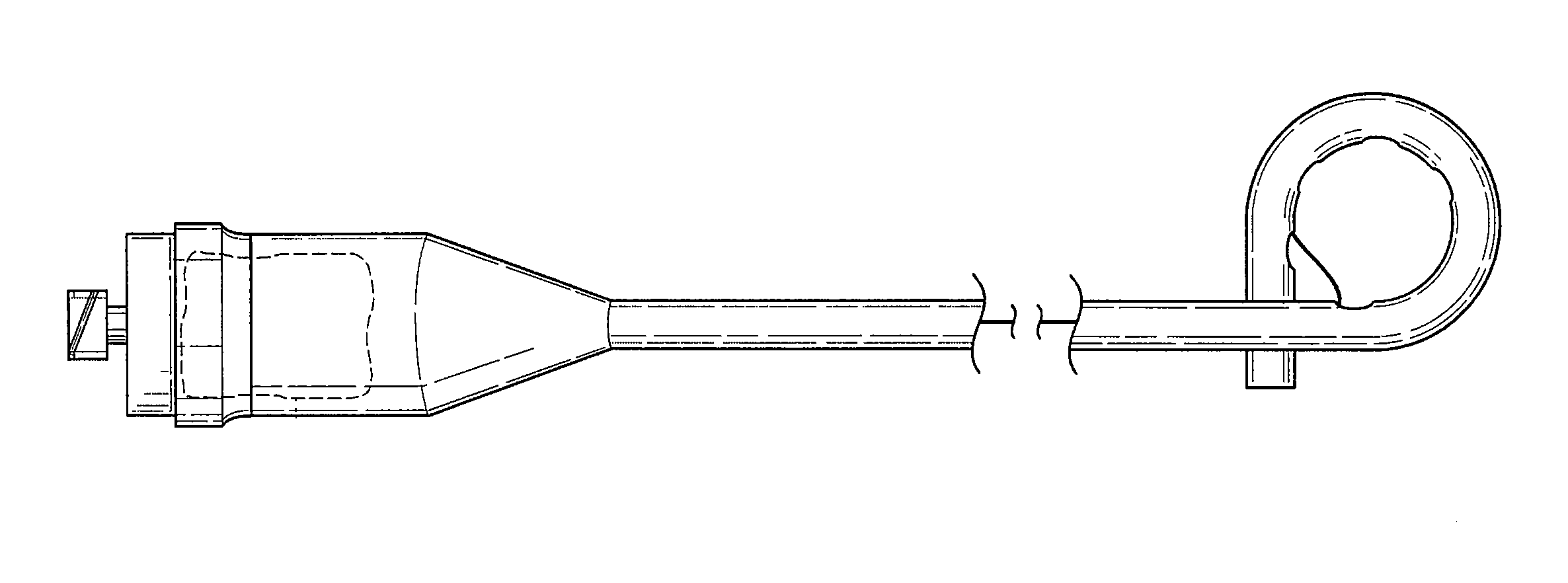Suture winding for a drainage catheter
a drainage catheter and suction tube technology, applied in the field of medical devices, can solve the problems of catheters being easily pulled out, hollow caps slipping or being inadvertently removed, and the potential for severe infections
- Summary
- Abstract
- Description
- Claims
- Application Information
AI Technical Summary
Problems solved by technology
Method used
Image
Examples
Embodiment Construction
[0022]In accordance with one embodiment of the drainage catheter claimed herein, and as shown in FIGS. 1 and 2, the drainage catheter includes a catheter tube 10 having distal and proximal ends 12, 14, a first connecting piece 16, a second connecting piece 18, and a tension member 20. The proximal end 14 of the catheter tube 10 is attached to the first connector piece 16 at a transitional connection 22. The transitional connection 22 may be accomplished using a ferrule, adhesive, frictional fit, clamps, a threaded connector, or in other manners known to those skilled in the art. In this embodiment, the distal end of the catheter tube includes a distal opening 24. A proximal opening 26 is located proximal of the distal opening 24, i.e., nearer the middle of the catheter tube 10. In some embodiments, a plurality of openings 28 will be arrayed between the distal opening 24 and proximal opening 26. Additional openings may also be placed proximal of the proximal opening 26, or the additi...
PUM
 Login to view more
Login to view more Abstract
Description
Claims
Application Information
 Login to view more
Login to view more - R&D Engineer
- R&D Manager
- IP Professional
- Industry Leading Data Capabilities
- Powerful AI technology
- Patent DNA Extraction
Browse by: Latest US Patents, China's latest patents, Technical Efficacy Thesaurus, Application Domain, Technology Topic.
© 2024 PatSnap. All rights reserved.Legal|Privacy policy|Modern Slavery Act Transparency Statement|Sitemap



